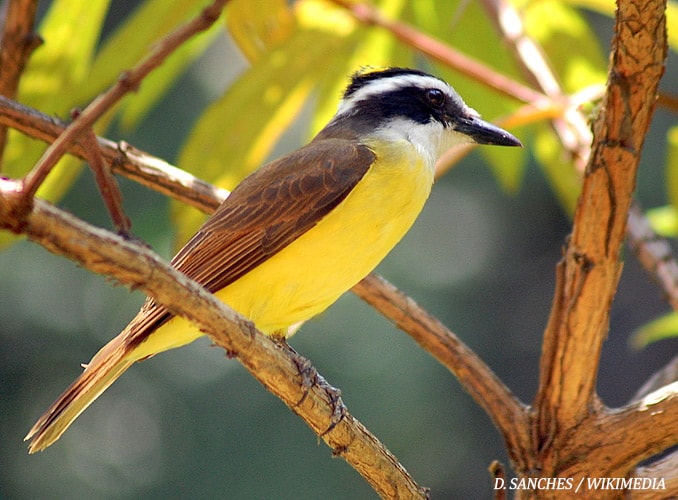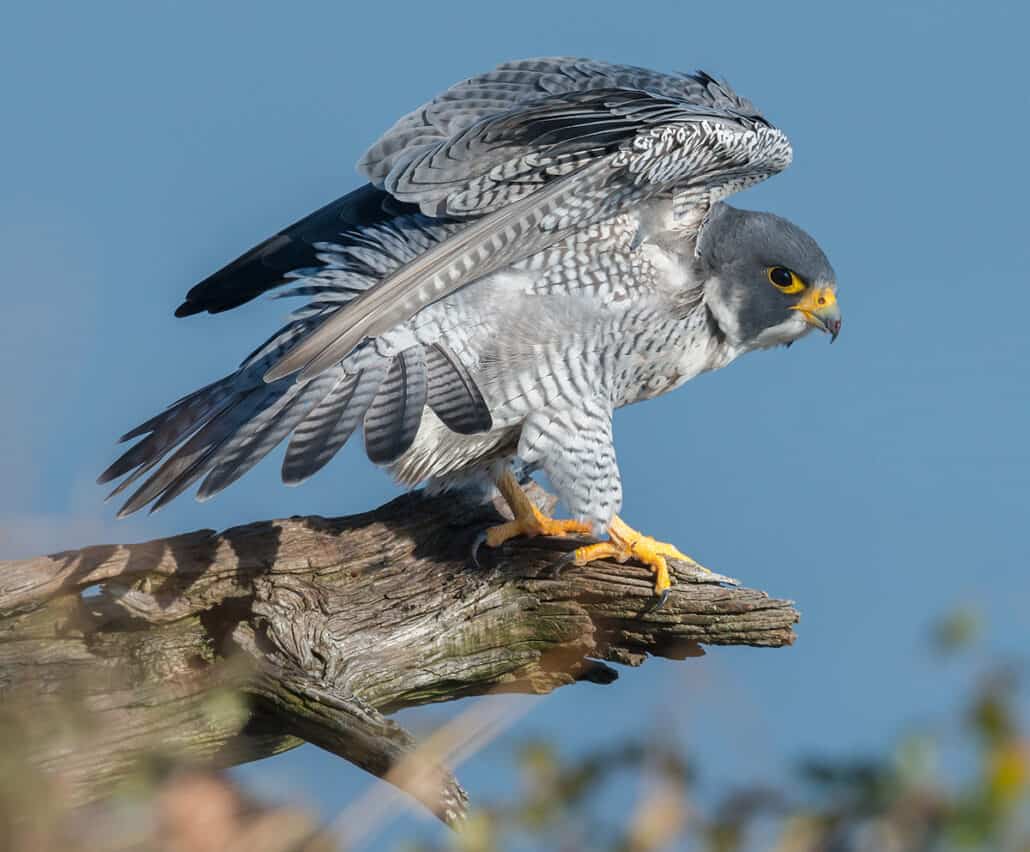Shopping for optics can often feel like an overwhelming task. How do you decide which binoculars are right for you?
Shopping for optics can often feel like an overwhelming task. With dozens of manufacturers offering hundreds of quality models, how do you decide which binoculars are right for you? What should you look for? What questions should you ask?
We sat down with Ben Lizdas, optics guru and longtime sales manager at Eagle Optics, and asked him these same questions. For more than two decades, Eagle Optics has been helping birders make good decisions regarding optics. They’ve heard every question and have learned how to successfully match folks up with the models best suited to meet their needs.
Here, BWD teams up with Ben Lizdas to break down the optics-buying process into a few key elements to consider, whether you’re a brand-new bird watcher buying your first optics or a seasoned veteran seeking an upgrade.
First Things First
First, every optics buyer should consider two fundamental elements: size and price range.
“Once we have the size figured out, that narrows our choices down from, say, 500 binoculars to 200 binoculars,” says Lizdas. After you couple your preferred size with a general price range, the field of options usually becomes an easily manageable list of four or five models.
What Size Binoculars Do You Want?
When we talk about size with regard to optics, it has less to do with the physical weight and dimensions and more to do with the power of the binoculars—the magnification and the diameter of the objective lenses (respectively the first and second numbers in 8×42, for example).
To determine what size will best suit your needs, think about how you intend to use your new binoculars. Do you plan to travel with them or stay in the backyard? Will you spend more of your time in woodlands watching warblers or in open areas watching hawks and shorebirds? Different types of birding favor different types of optics (more on that shortly).
The standard birding binoculars these days are 8×42, so chances are that’s the size you want to aim for. But you may want to go with more magnification, in which case 10-power binoculars are great (if you can hold them steady).
Of course, you shouldn’t completely ignore physical weight and dimensions. The diameter of the objective lens—that second number—is a rough indicator of the binoculars’ weight; an 8×20, a typical pair of compact binoculars, is going to weigh significantly less than an 8×42, the typical full-size binoculars. Weight varies from model to model as well.
Although two 8×42 models might have the same physical dimensions, they might have different amounts of rubber armor or be made from a different material. Physical dimensions will vary as well. “It’s always important to imagine putting [the binoculars] in your hands,” advises Lizdas. “A typical 8×42 model is going to be about 5 inches across, 6.5 inches long, and weigh about 22 ounces. Ask yourself if that sounds about right.”
What Does Your Budget Look Like?
When determining how much money you’re willing to spend on new optics, there is a series of breaking points to consider. “In the first $300, improvements come cheap,” says Lizdas. In lower-priced optics, spending an extra $50 can make a huge difference in terms of clarity and sharpness. The “sweet spot” for quality, midpriced binoculars is between $300 and $600, according to Lizdas. “That [price range] is where your average birder will buy a pair of binoculars,” he says.
The next level of upgrades usually falls around $1,000 to $1,200. Beyond that, the premium models come in at $2,000 and above. It’s important to consider which of those price ranges best lines up with your budget.
Keep in mind that when it comes to optics, you get what you pay for. “Those $2,000 binoculars are not four times as good as the $500 binoculars,” observes Lizdas. “However, they are objectively, easily discernibly better. The view that you get for $2,000, you can’t get for less money.”
As a rule of thumb, if you’re serious about watching birds, you should buy the best optics you can afford. Few buyers regret spending a little extra to enjoy higher-quality optics, but Lizdas says he frequently hears customers lament skimping on quality because of the cost.
Other Details
Once you’ve figured out what size binoculars you need and the approximate budget you can work with, you’ve probably narrowed your options down to a small handful of models. Now you can start looking at a few remaining important details, such as close focus. “Not all 8x42s have the same close focus: Some won’t focus any closer than 14 feet, whereas others focus down to 5 feet,” says Lizdas.
If you wear eyeglasses, make sure your binoculars have appropriate eye relief with retractable eyecups. This is especially important when looking at compact binoculars.
You should also inquire about the binoculars’ warranty: What kind of warranty comes with that particular model or manufacturer? “Some manufacturers have excellent, unconditional warranties where they’ll cover anything that happens to the optics as long as you can send them the broken pieces,” says Lizdas. “Other manufacturers tend to be a little more stingy, and some just kind of meet expectations.”
What Kind of Birding Do You Plan To Do?
Chances are the answer to this question is “All of the below.” Nevertheless, take some time to consider what type of birding you plan to do most often, and select your optics accordingly.
Backyard Bird Watching
For a backyard bird watcher, close focus is key. Oftentimes you have feeders right outside your window, and your house can serve as a blind. Some features are probably not necessary for backyard bird watching. For example, you probably don’t need waterproof binoculars if you’re going to be doing most of your bird watching around the house.
By taking this into consideration, you have an opportunity to save a little money. Also, weight is not a critical factor because the binoculars will probably be sitting on a windowsill or coffee table rather than hanging around your neck all day. Consider going with heavier, full-sized binoculars to take advantage of better low-light performance.
Traveling for Birds
When it comes to birding and traveling, there are two types of people: the traveling birder and the birding traveler. A traveling birder travels specifically to go birding, and is frequently in outdoor, remote areas, exposed to the elements. Waterproofing is important because of the likelihood of being out in the elements while exploring, hiking, or kayaking. A traveling birder needs optics with incredible durability and trusted reliability.
“That switches us up to a higher price point,” says Lizdas. “High-end binoculars have a higher build quality—the materials they use, the way they cut all the parts, the way they all fit together, and the precision of all the moving parts are better. The result is [a model] that is mechanically more robust.
Why are all these professional guides using $2,000 binoculars? It’s not because they’re making so much money leading birding tours in New Guinea—it’s because they use their binoculars every day and they need something they can take into the bush in Africa with no chance of breaking down.”
By contrast, the birding traveler is someone who goes on a business trip or a family vacation and wants to squeeze in a little bird watching around the edges. For the birding traveler, compact binoculars might be worth considering.
Maybe you don’t plan to do much birding on your trip, but you feel lost not carrying something, so you want to stash emergency binoculars in your briefcase or jacket pocket just in case. “When you see that strange woodpecker up in a tree, you want to be able to see what it is,” says Lizdas. Keep in mind, however, that compacts won’t offer the same view as a full-sized model. “It’s a compromise for sure,” says Lizdas.




